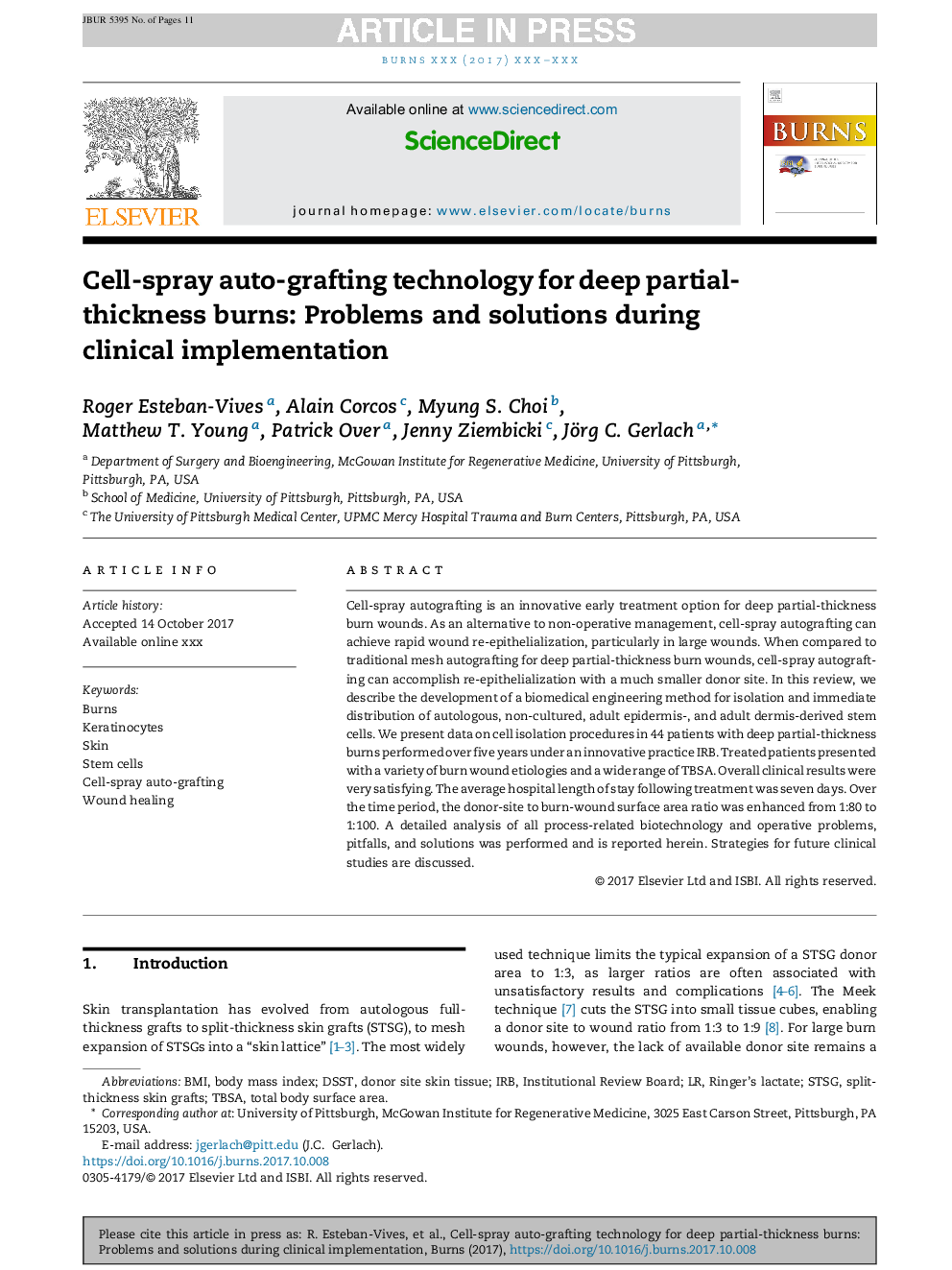| Article ID | Journal | Published Year | Pages | File Type |
|---|---|---|---|---|
| 8694669 | Burns | 2018 | 11 Pages |
Abstract
Cell-spray autografting is an innovative early treatment option for deep partial-thickness burn wounds. As an alternative to non-operative management, cell-spray autografting can achieve rapid wound re-epithelialization, particularly in large wounds. When compared to traditional mesh autografting for deep partial-thickness burn wounds, cell-spray autografting can accomplish re-epithelialization with a much smaller donor site. In this review, we describe the development of a biomedical engineering method for isolation and immediate distribution of autologous, non-cultured, adult epidermis-, and adult dermis-derived stem cells. We present data on cell isolation procedures in 44 patients with deep partial-thickness burns performed over five years under an innovative practice IRB. Treated patients presented with a variety of burn wound etiologies and a wide range of TBSA. Overall clinical results were very satisfying. The average hospital length of stay following treatment was seven days. Over the time period, the donor-site to burn-wound surface area ratio was enhanced from 1:80 to 1:100. A detailed analysis of all process-related biotechnology and operative problems, pitfalls, and solutions was performed and is reported herein. Strategies for future clinical studies are discussed.
Keywords
Related Topics
Health Sciences
Medicine and Dentistry
Critical Care and Intensive Care Medicine
Authors
Roger Esteban-Vives, Alain Corcos, Myung S. Choi, Matthew T. Young, Patrick Over, Jenny Ziembicki, Jörg C. Gerlach,
